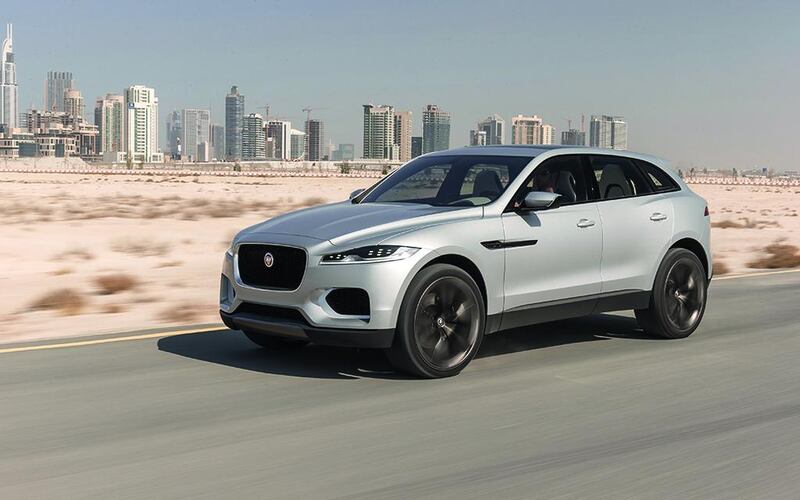But the fact that Jaguar’s C-X17 concept crossover can move at all is impressive enough. This car, which was unveiled at the Frankfurt motor show in September, is nothing more than a design study in the truest sense. Unlike other recent Jag concepts, this model is still several years away from production (if, indeed, it will be built) but, according to the company’s styling chief, Ian Callum, the exterior is about as close to a potential production version as is possible.
The only C-X17 in existence has been treated to a new coat of paint since its Frankfurt debut, transforming from blue to silver, which, in the process, highlights its complex shape more effectively. Under the early afternoon sun, light bounces off its flanks to reveal a subtle beauty that’s missing from almost all others of its kind. Immediately recognisable as a Jaguar, it manages to meld existing design cues from the XJ and new F-Type, without looking like it’s trying too hard. It’s physically imposing, yes, but it’s graceful and harmonious at the same time.
While the exterior design is pretty much a done deal, the interior is much less so. “Inside a concept car is where we can really have a play,” says Julian Thomson, Jaguar’s head of advanced design. “If you study the details inside the C-X17, you’ll see that most of it is totally impractical and unlikely to be put into production. But it’s fun to imagine what cars will be like to sit inside in the future.”
The sculpted (and quite beautiful) seats are hard on the derrière, being formed from a composite and remaining unpadded. There’s blue neon lighting oozing from the doors, the dashboard and the centre console, while the two major dials housed within the instrument cluster look like blue rocket afterburners. It all looks utterly fantastic – clean, elegant and, despite the abundance of neon, understated.
To drive it, one of the car’s guardians has to insert a glorified screwdriver into an aperture on the centre console and twist it to engage “Drive”. Once on the move, I’m asked to keep the speed down, go easy on the brakes and to try to avoid the potholes. After today, this car will be packed away, cleaned up and installed on the Jaguar stand at the Dubai International Motor Show, so it’s understandable that the people charged with ensuring its safety are a tad anxious.
Even at a sedate pace, the car creaks and groans, as if there’s no suspension to soak up the surface undulations. The brakes scream in protest at even the merest application, the steering feels totally disconnected from the front wheels and the engine’s unpleasant boom fills the cabin, with no sound-deadening materials to reduce its impact. It’s the polar opposite of what you’d expect while looking at it under the spotlights at the Dubai show.
So what’s the point in Jaguar allowing a select group of media behind the wheel of a car that feels like it’s been built from spare parts found in your neighbour’s garage? For one thing, it allows us to see it on the move, which is when a car’s shape really starts to make sense. It also shows the world that this is a serious prospect, not simply a flight of fancy. It’s a living, breathing, moving piece of its maker’s future, and being able to pilot it even for just a few minutes is an enormous privilege.
The automotive landscape has changed over the past few years and crossovers are big business all around the world. Bentley, Lamborghini and even Rolls-Royce are jumping on the bandwagon, so for Jaguar to ignore this sector would be madness. This car must be built. Jaguar knows it and, after a few minutes in its company, so do I.
[ khackett@thenational.ae ]
Follow us @LifeNationalUAE
Follow us on Facebook for discussions, entertainment, reviews, wellness and news.





